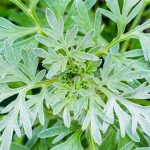 A bitter-tasting medicinal herb which can be used to treat digestive problems and other ailments. It is also used to produce vermouth. Available at health food stores.
A bitter-tasting medicinal herb which can be used to treat digestive problems and other ailments. It is also used to produce vermouth. Available at health food stores.
Intensely bitter leaves were an important ingredient in absinthe, vermouth, and other liqueurs. Has great reputation for stimulating the appetite and improving digestion. One of the oldest known remedies for worms.
A toxic substance, absinthium, obtained from Artemisia absinthium. It was used in certain alcoholic beverages (absinthe), but because of its toxicity such use is prohibited in most countries.
A type of herb, renowned for its bitterness, surpassing even rue, is known as “Wormwood.” This herb is commonly utilized to produce absinthe and is also utilized in small and diluted quantities for flavoring various alcoholic beverages, including wines (notably vermouth), spirits (notably bitters), and certain liqueurs. The use of excessive amounts of wormwood in absinthe was known to cause convulsions and even death, and as a result, the production of absinthe is currently prohibited in several countries. The wormwood plant typically grows two to three feet tall and has silky grey leaves with yellow flowers. This herb has been used for medicinal purposes since ancient times, and remedies for stomach ailments utilizing wormwood were known to the Greeks and Romans and remained in use during the Middle Ages. Wormwood is sometimes referred to as “Absinthe,” and is related to other herbs such as mugwort and tarragon.
Let us delve into the realm of medicinal plants, which once held a diverse array of names, encompassing various wild species. These plants were revered for their therapeutic properties, utilized in the preparation of soothing herbal infusions, herb-flavored liqueurs, and even the renowned beverage known as absinthe. However, it is crucial to note that the employment of one particular plant, known by a specific name, has now been strictly prohibited. This restriction arises from compelling evidence that this plant, unfortunately, poses a significant risk to visual health, potentially leading to blindness.
